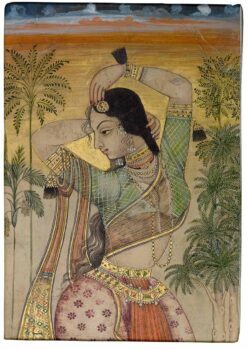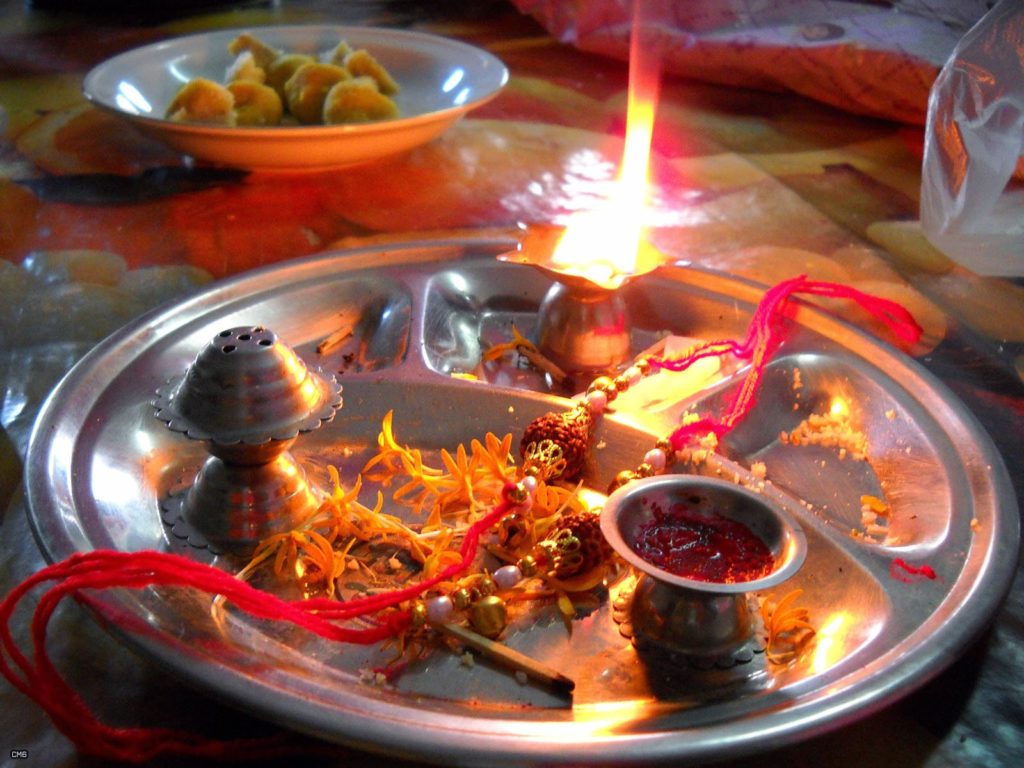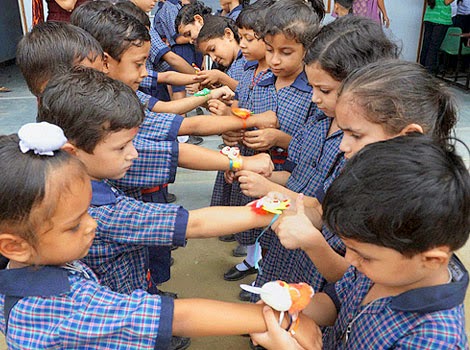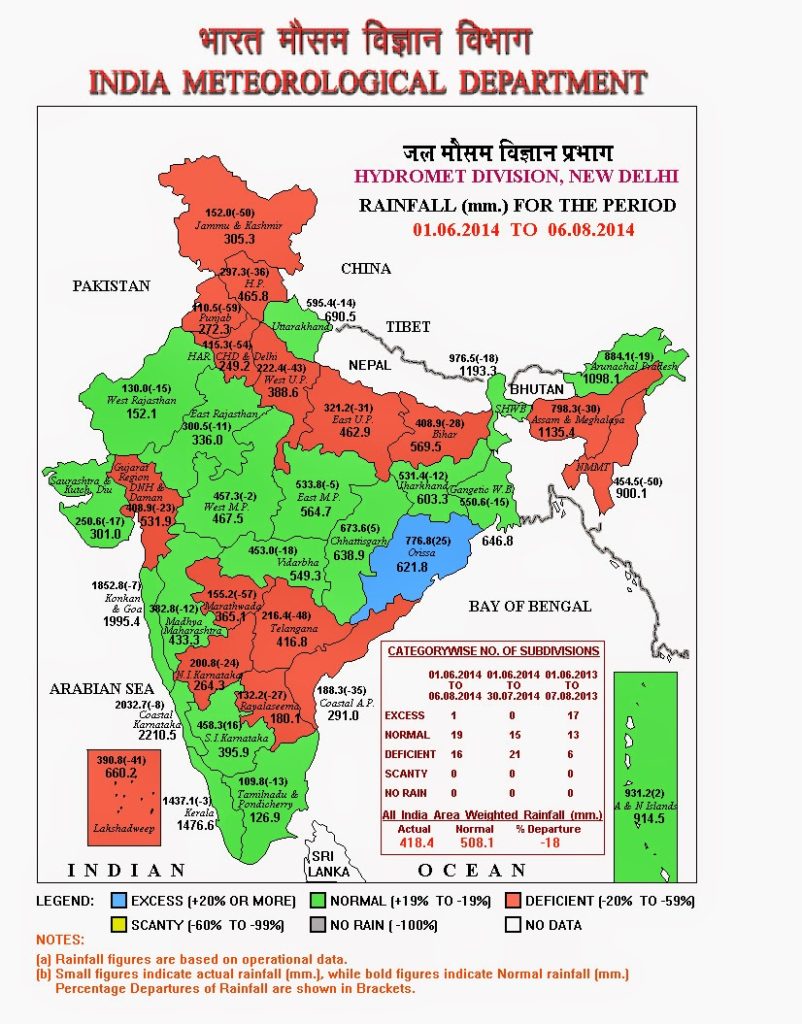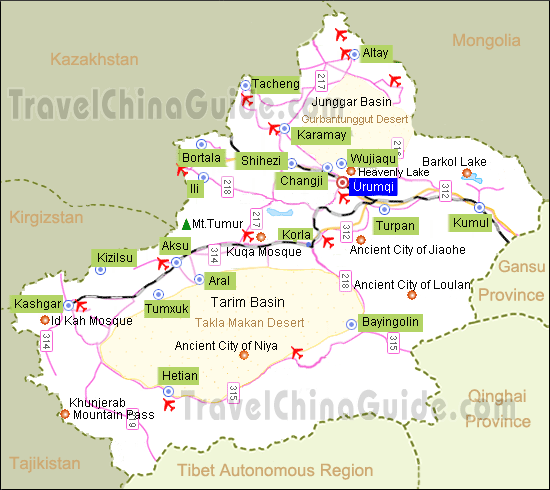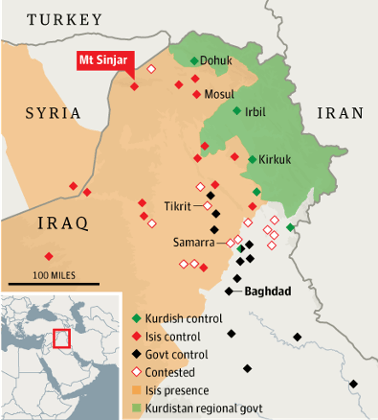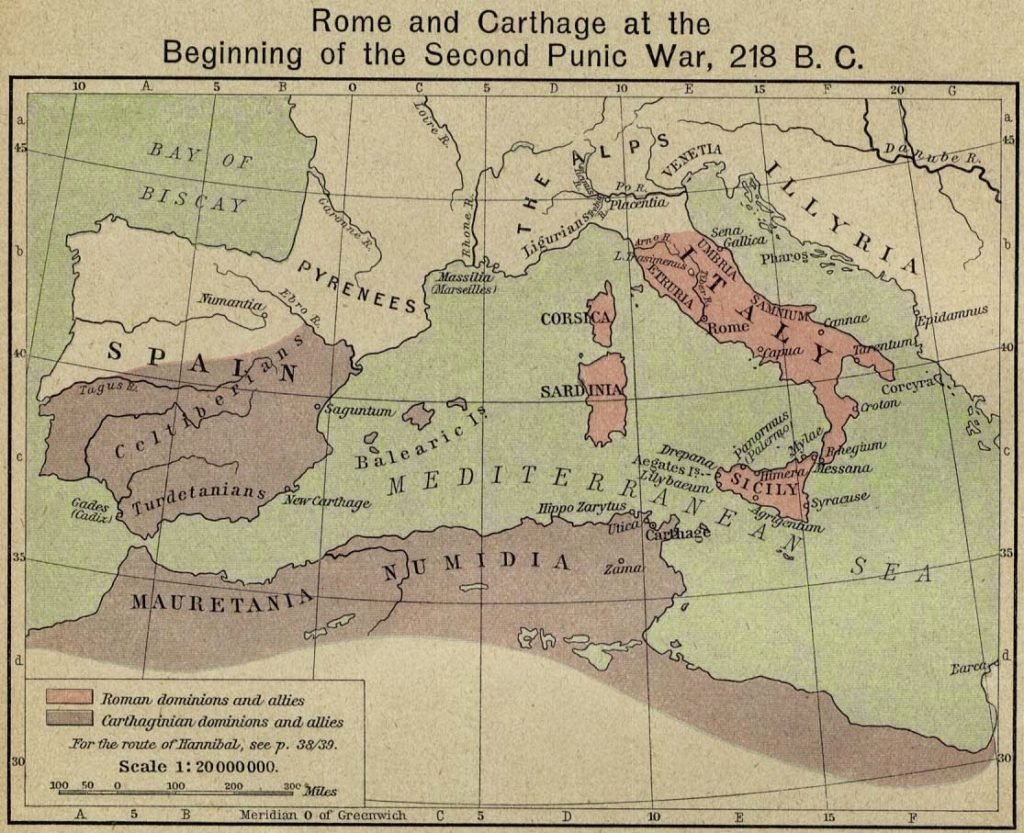…..The essence of
Hinduism is that it has no essence……What defines Hinduism and sets it apart
from other major religions is its polycentricity, its admission of multiple
centers of belief and practice, with a consequent absence of any single
structure of theological or liturgical power….Hinduism is
a banyan tree, in the shade of whose canopy, supported by not one but many
trunks, a great diversity of thought and action is sustained….
…
A wart-free, sanitized version, but nevertheless (in our opinion) a good first primer…
Most Hindus would be hard-pressed to define Hinduism (we say this as a non-believer but with deepest sincerity). Having said that it is our observation that Hinduism is evolving fast and becoming a very different entity than what it was even a few decades ago. In our opinion (and in our little corner of the world) this is just as important as the transformation of Islam into a more austere, back to the roots version (which is also very different from what it was a few decades ago).
Take the example of caste. We are admittedly a bit too fond of the – ”Syrian Christians are Brahmins” – gag (thus, Arundhati Roy is a Brahmin from her mother’s side). Even though people have called us haters for saying this but still…we have met a fair, few SyCh-s and they have (even in short conversations) always managed to bring up this “fact.” In a country where lot of people (majority) equate folk-lore with history, such a deeply held belief probably should be accepted as fact.
In our (non-scholarly) opinion, caste is but a tribe, we have a million castes and a zillion tribes in modern India. We would even go so far as to argue that the Kayasthas of Uttar Pradesh (Saxena, Srivastava, Mathur, Bhatnagar, Gaur, Asthana, Nigam, Kulshrestha,…) are a different tribe than the Kayasthas from Bengal (Ghosh, Basu, Mitra, Dutta,…), even though folk-lore states that Kayasthas (and other super-castes) were “imported” from UP to Bengal any centuries ago.
……
What is the relationship between Hinduism and caste? Without delving too deep into the question (we do not have the knowledge base to do so) we ask another related question. Which came first: association as Hindus or dissociation as castes? If caste=tribe assumption is correct, then it may well be that society was divided into castes before developing a common set of rituals that we now recognize to be as part of Hinduism. The philosophical foundations of caste were possibly added post-hoc by Hindu scholars.
What is the significance of Gotra? It is possible of people from different castes to have the same gotra (and vice versa). To us, this seems like a contradiction in terms, unless it is also recognized that caste is not defined (and was not originally) defined rigidly.
The march towards a common Canon-feasible? The left-liberals assure us that such a thing is inconceivable. However (again as an outsider) it seems that this is exactly what the Hindutva project is all about. To the extent this process is influenced by the Arya Samaj, Hinduism should be ready to abolish idolatry, caste and ancestral worship (starting with cremation rituals). The Hindu religion (official version) will look a bit like Islam!!! But unofficially, we doubt that Hindus will ever be able to get rid of idolatry- it is actually the one big differentiator.
Is it possible to abolish caste? We are seeing this in both ways. The opinion makers- the middle class (derived from all castes and from other religions) – have become more protective about caste identity. At the same time urban lifestyle (and western values that are creeping upon us all the time) is anti-caste. Remove the iron rod of religion and no guardian can stop a Hindu boy falling in love with a Muslim girl (to take the most extreme case of societal bridge building).
Eventually we are hopeful that caste will become ceremonial in nature: yes, we like to know where you came from. But that is not your only identity or even the primary identity. You are a human being, first and foremost. Make this society (and country and world) a better place to live (preferably through non-violent means), or step out of the way. This will only happen when the Dalits get their fair share (starting with a Dalit Prime Minister).
The USA has managed to elect a black man (twice) as top dog (if one chooses to be picky about ancestry, having a Kenyan papa is not the same as having a black-american dad). In India, a Maha-Dalit (the lowest in the caste ladder) became the Chief Minister of Bihar (after Nitish Kumar was crushed by the Tsunamo and stepped aside).
The USA is also getting prepared to elect a Madame President in 2016. If Mayawati manages to secure the top spot she would do so as the first unmarried, Dalit woman, who was also mentored by a Dalit (Kanshi Ram, no relation). That would be a truly defining moment for modern India.
Religion will probably stay with us (unfortunately). It helps define the “other” as much as it defines ourselves. Canon or no canon, Hinduism will be defined as the un-Islam, Sikhism as un-Islam and un-Hindu, and so on….
……………….
Gary Gutting: How might looking at Hinduism
alter philosophical approaches to religion that take Christianity as their
primary example?
Jonardon Ganeri: Taking
Christianity as the exemplar of religion skews philosophical discussion towards
attempts to solve, resolve or dissolve difficult philosophical puzzles inherent
in monotheism: problems about God’s powers, goodness and knowledge; attempts to
provide rational arguments for God’s existence; the problem of evil; and so on.
Hindu philosophers have traditionally been far more interested in a quite
different array of problems, especially questions about the nature of religious
knowledge and religious language, initially arising from their concerns with
the Veda as a sacred eternal text and as a source of ritual and moral law.
…
G.G.: Does this mean that
Hinduism is a religion without God?
J.G.: Many Hindus believe in God, but not
all in the same God: For some it is Vishnu, for others Shiva, for others again
it is rather the Goddess. Some of the more important Hindu philosophers are
atheists, arguing that no sacred religious text such as the Veda could be the
word of God, since authorship, even divine authorship, implies the logical
possibility of error. Whether believed in or not, a personal God does not
figure prominently as the source of the idea of the divine, and instead
non-theistic concepts of the divine prevail.
…..
G.G.: What do you mean by
“non-theistic” concepts of the divine?
J.G.: One such concept
sees the text of the Veda as itself divine. Its language, on this view, has a
structure that is prior to and isomorphic with the structure of the world and
its grammar is complete (although parts may have been lost over the centuries).
The divinity of the text inverts the order of priority between text and author:
Now, at best, assignment of authorship is a cataloging device not the
identification of origin. Recitation of the text is itself a religious act.
…
Another Hindu conception of the divine is that it is
the essential reality in comparison to which all else is only concealing
appearance. This is the concept one finds in the Upanishads. Philosophically
the most important claim the Upanishads make is that the essence of each person
is also the essence of all things’; the human self and brahman (the
essential reality) are the same.
…
This identity claim leads to a
third conception of the divine: that inwardness or interiority or subjectivity
is itself a kind of divinity. On this view, religious practice is
contemplative, taking time to turn one’s gaze inwards to find one’s real self;
but — and this point is often missed — there is something strongly
anti-individualistic in this practice of inwardness, since the deep self one
discovers is the same self for all.
….
G.G.: Could you say
something about the Hindu view of life after death? In particular, are Hindu
philosophers able to make sense of the notion of reincarnation?
J.G.: Every religion has
something to say about death and the afterlife, and hence engages with
philosophical questions about the metaphysics of the self. While Christian
philosophy of self tends to be limited to a single conception of self as
immortal soul, Hindu philosophers have experimented with an astonishing range
of accounts of self, some of which are at the cutting edge in contemporary
philosophy of mind.
….
G.G.: Could you give an
example?
J.G.: The self as an
immaterial, immortal soul is consistent with the Hindu idea of survival through
reincarnation. But some Hindu philosophers have concluded that mind and the
mental must be embodied. If so, reincarnation requires that mental states must
be able to be “multiply realized” in different physical states. …
This led to the
idea, much later popular among analytic philosophers of mind, that the mental
is a set of functions that operate through the body. Such an approach supports
the idea that there is a place for the self within nature, that a self — even
one that exists over time in different bodies — need be not a supernatural
phenomenon.
…..
G.G.: What sort of ethical guidance does
Hinduism provide?
J.G.: One of the most important
texts in the religious life of many Hindus is the Bhagavadgita, the Song of the
Lord. The Gita is deeply philosophical, addressing in poetic, inspirational
language a fundamental conundrum of human existence: What to do when one is
pulled in different directions by different sorts of obligation, how to make
hard choices. The hard choice faced by the protagonist Arjuna is whether to go
to war against members of his own family, in violation of a universal duty not
to kill; or to abstain, letting a wrong go unrighted and breaking a duty that
is uniquely his. Lord Krishna counsels Arjuna with the philosophical advice
that the moral motivation for action should never consist in expected outcomes,
that one should act but not base one’s path of action on one’s wants or needs.
…..
G.G.: This sounds rather
like the Kantian view that morality means doing what’s right regardless of the
consequences.
J.G.: There are ongoing
debates about what sort of moral philosophy Krishna is proposing — Amartya Sen
has claimed that he’s a quasi-Kantian but others disagree. More important than
this scholarly debate, though, is what the text tells us about how to live:
that living is hard, and doing the right thing is difficult; that leading a moral
life is at best an enigmatic and ambiguous project. No escape route from moral
conflict by imitating the actions of a morally perfect individual is on offer
here. Krishna, unlike Christ, the Buddha or Mohammed is not portrayed as
morally perfect, and indeed the philosopher Bimal Matilal very aptly describes
him as the “devious divinity.” We can but try our best in treacherous
circumstances.
….
G.G.: How does the notion
of “karma” fit into the picture?
J.G.: Let me be clear. The
idea of karma is that every human action has consequences, but it is not at all
the claim that every human action is itself a consequence. So the idea of karma
does not imply a fatalistic outlook on life, according to which one’s past
deeds predetermine all one’s actions. The essence of the theory is simply that
one’s life will be better if one acts in ways that are ethical, and it will be
worse if one acts in ways that are unethical.
….
A claim like that can be
justified in many different ways. Buddhism, for example, tends to give it a
strictly causal interpretation (bad actions make bad things happen). But I
think that within Hinduism, karma is more like what Kant called a postulate of
practical reason, something one does well to believe in and act according to
(for Kant, belief in God was a practical postulate of this sort).
….
G.G.: How does Hinduism
regard other religions (for example, as teaching falsehoods, as worthy
alternative ways, as partial insights into its fuller truth)?
J.G.: The essence of
Hinduism is that it has no essence. What defines Hinduism and sets it apart
from other major religions is its polycentricity, its admission of multiple
centers of belief and practice, with a consequent absence of any single
structure of theological or liturgical power. Unlike Christianity, Buddhism or
Islam, there is no one single canonical text — the Bible, the Dialogues of the
Buddha, the Quran — that serves as a fundamental axis of hermeneutical or
doctrinal endeavor, recording the words of a foundational religious teacher.
(The Veda is only the earliest in a diverse corpus of Hindu texts.) Hinduism is
a banyan tree, in the shade of whose canopy, supported by not one but many
trunks, a great diversity of thought and action is sustained.
…..
G.G.: Would Hinduism
require rejecting the existence of the God worshiped by Christians, Jews or
Muslims?
J.G.: No, it wouldn’t. To
the extent that Hindus worship one God, they tend to be henotheists, that is,
worshiping their God but not denying the existence of others (“every individual
worships some God,” not “some God is worshipped by every individual”). The
henotheistic attitude can accept the worship of the Abrahamic God as another
practice of the same kind as the worship of Vishnu or Shiva (and Vaishnavism
and Shaivism are practically different religions under the catchall rubric
“Hinduism”).
….
Without a center, there can be no
periphery either, and so Hinduism’s approach to other religions tends to be
incorporationist. In practice this can imply a disrespect for the otherness of
non-Hindu religious traditions, and in particular of their ability to challenge
or call into question Hindu beliefs and practices. The positive side is that
there is in Hinduism a long heritage of tolerance of dissent and difference.
….
One explanation of this tolerance of difference is
that religious texts are often not viewed as making truth claims, which might
then easily contradict one another. Instead, they are seen as devices through
which one achieves self transformation. Reading a religious text, taking it to
heart, appreciating it, is a transformative experience, and in the transformed
state one might well become aware that the claims of the text would, were they
taken literally, be false. So religious texts are seen in Hinduism as “Trojan
texts” (like the Trojan horse, but breaking through mental walls in disguise).
Such texts enter the mind of the reader and help constitute the self.
…
The Hindu attitude to the Bible
or the Quran is the same, meaning that the sorts of disagreements that arise
from literalist readings of the texts tend not to arise.
….
G.G.: What ultimate good
does Hinduism promise those who follow it, and what is the path to attaining
this good?
J.G.: The claim is that
there are three pathways, of equal merit, leading in their own way to
liberation. Hindu philosophers have employed a good deal of logical skill in
their definitions of liberation. To cut a long story short, for some it is a
state defined as the endless but not beginingless absence of pain; others
characterize it as a state of bliss. The three pathways are the path of
knowledge, the path of religious performance and the path of devotion. The path
of knowledge requires philosophical reflection, that of religious performances
various rituals and good deeds, and that of devotion worship and service, often
of a particular deity such as Krishna.
….
G.G.: Could you say a bit
more about the path of knowledge and its relation to philosophy?
J.G.: Knowledge can
liberate because epistemic error is the primary source of anguish, and
knowledge is an antidote to error. I might err, for example, if I believe that
I only need to satisfy my current desires in order to be happy. The antidote is
the knowledge that the satisfaction of one desire serves only to generate
another.
According to the Nyaya
philosopher Vatsyayana, this is why philosophy is important. Doing philosophy
is the way we cultivate our epistemic skills, learning to tell sound doxastic
practices from bogus ones, and the cultivation of epistemic skills is what
stops the merry-go-round between cognitive error and mental distress. So it
isn’t that philosophy and religion are not distinct, but that there is a
meta-theory about their relationship.
….
G.G.: The liberation
you’ve described seems to be a matter of escaping from the cares of this world.
Doesn’t this lead to a lack of interest in social and political action to make
this world better?
J.G.: The great narrative texts of Hinduism are
the two epics, the Mahabharata and the Ramayana. These epics are drawn on as
resources in thinking about ethical conduct; forms of just society; and the
possibility of various kinds of political and social agency. They are vast
polycentric texts, and are read as such by Hindus. ….
One of the important virtues
of these epics is that they give voice to a range of participants within Hinduism
that tend to go unheard: women, the disenfranchised, the outsider, the migrant.
They provide these groups with important models for social and political
intervention. That’s one reason they have always been very popular works within
the Hindu diaspora.
….
The mirror image of the idea that
liberation consists in the absence of distress is that a free society consists
in the absence of injustice; thus the removal of injustice, rather than the
creation of a perfect or ideal society, is the target of political action. Just
as the absence of distress is a minimal condition compatible with many
different kinds of human well-being (we are back to the theme of
polycentricism), so the absence of injustice is compatible with many different
types of well-ordered community or society.
….
G.G.: How do you respond
to the charge that Hinduism has supported the injustices of the caste system in
India?
J.G.: I think it is
important to see that Hinduism contains within itself the philosophical
resources to sustain an internal critique of reprehensible and unjust social
practices that have sometimes emerged in Hindu societies. The Upanishadic idea
that all selves are equal, and one with brahman, for example, can be
drawn on to challenge the system of caste. There are thus forms of rational
self-criticism that the diverse riches of Hindu philosophy enable, and an
individual’s social identity as a Hindu is something to be actively fashioned
rather than merely inherited.
……
Link: http://opinionator.blogs.nytimes.com/what-would-krishna-do-or-shiva-or-vishnu
….
regards
